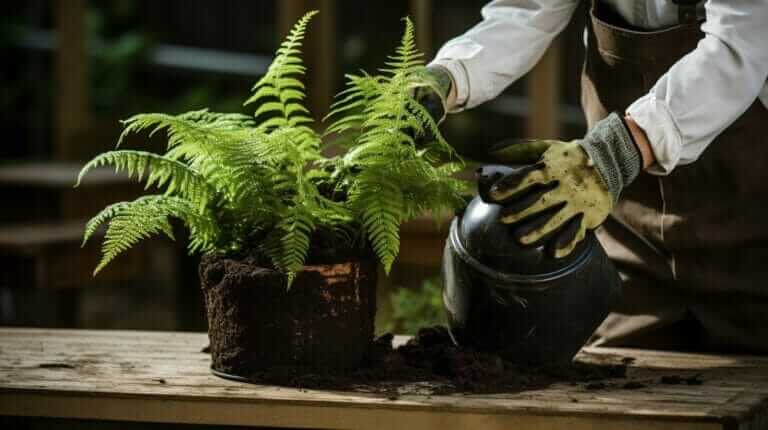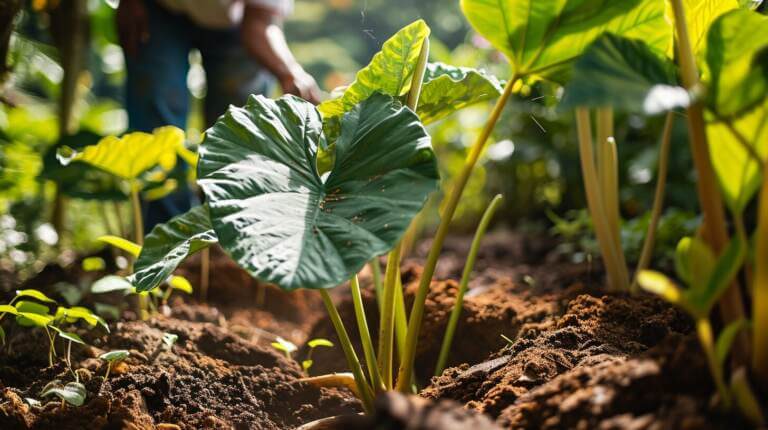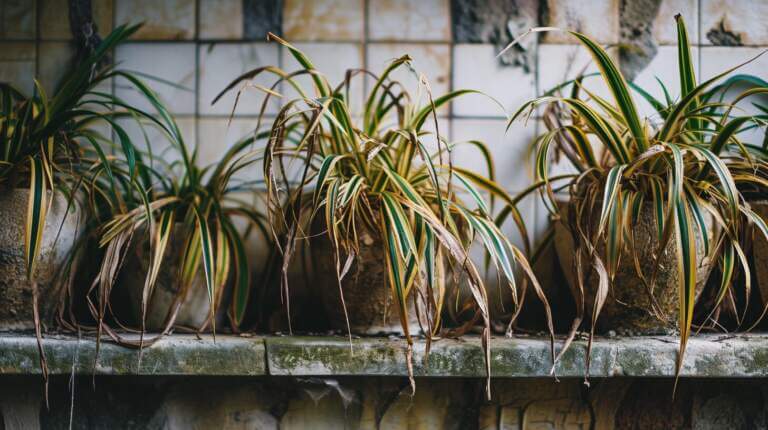Troubleshooting Common African Violets Problems And How To Fix It
African violets are beloved houseplants known for their vibrant blooms and fuzzy leaves. However, like any living organism, they can encounter problems from time to time. In this section, I will provide you with valuable tips to address and troubleshoot common issues that may arise with your African violets.
Key Takeaways:
- Pay attention to the leaves of your African violets as they can indicate various problems.
- Yellowing leaves could be a sign of water shock or old age.
- Curling leaves may be caused by cold air or excessive sunlight.
- Brown spots can result from water spotting or overfertilization.
- Drooping or limp leaves could be a result of dehydration or overwatering.
African Violet Leaves Curling
African violet leaves curling can be a frustrating problem for plant owners. There are several possible causes for this issue, including cold air and too much sunlight. If you notice that the leaves are curling under and becoming brittle, it’s a sign that the plant is not warm enough. African violets thrive in temperatures between 65-75°F (18-24°C). Placing the plant near drafts or in a cold room can cause the leaves to curl and become brittle.
On the other hand, too much direct sunlight can also cause the leaves to curl. African violets prefer bright, indirect light, but intense sunlight can burn their leaves. If your plant is exposed to too much sunlight, it may respond by curling its leaves as a defense mechanism.
To address curling leaves, ensure that your African violet is placed in a warm, draft-free area with bright, indirect light. Avoid exposing it to cold air or direct sunlight. Additionally, make sure the plant is not receiving excessive water, as overwatering can also lead to leaf curling. By providing the right conditions, you can help your African violet thrive and prevent curling leaves.
Table: Common Causes of African Violet Leaf Curling
| Causes | Symptoms | Solutions |
|---|---|---|
| Cold air | Leaves curling under and becoming brittle | Place the plant in a warm, draft-free area |
| Too much sunlight | Leaves curling as a response to intense sunlight | Move the plant to a location with bright, indirect light |
| Overwatering | Leaves curling due to excessive moisture | Ensure proper drainage and water the plant only when the top inch of soil feels dry |
African Violet Leaves Turning Brown
African violets are prized for their vibrant blooms and lush foliage. However, when the leaves start turning brown, it can be a cause for concern. Brown leaves on African violets can be attributed to water spotting or too much fertilizer. Understanding the causes and implementing the necessary steps can help revive your plant and restore its health.
Water Spotting
One common cause of brown leaves on African violets is water spotting. When water splashes onto the leaves and is left to dry, it can create brown spots. To prevent water spotting, it’s important to water the plants carefully, making sure to avoid wetting the foliage. Instead, focus on watering the soil directly at the base of the plant.
Too Much Fertilizer
Another reason for brown leaves is an excessive amount of fertilizer. Overfertilization can cause the edges of the leaves to turn brown. It’s crucial to follow the recommended fertilizer dosage for African violets or use a diluted solution to prevent nutrient burn. Additionally, flush the soil occasionally to remove excess salts and ensure proper nutrient absorption.
Preventing Brown Spots
To prevent brown spots on African violet leaves, it’s important to maintain proper watering practices and use a balanced fertilizer. Avoid wetting the foliage during watering and ensure the plant receives adequate but not excessive nutrition. By taking these preventive measures, you can keep your African violet’s leaves healthy and vibrant.
| Potential Causes | Symptoms | Solutions |
|---|---|---|
| Water Spotting | Brown spots throughout the leaves | – Water the soil directly, avoiding the foliage – Wipe off any water splashes on the leaves |
| Too Much Fertilizer | Brown spots concentrated on leaf edges | – Follow recommended fertilizer dosage for African violets – Flush the soil occasionally to remove excess salts |
By addressing the issues of water spotting and overfertilization, you can help your African violets regain their vibrant green foliage. Paying attention to watering techniques and being mindful of fertilizer application will go a long way in preventing brown leaves. With proper care and attention, your African violets will thrive, showcasing their beautiful blooms and healthy leaves.
African Violet Leaves Turning Yellow
Yellow leaves on an African violet can be a cause for concern as they often indicate an underlying issue. There are two common reasons why African violet leaves may turn yellow: water shock and old age. Understanding these causes and how to address them will help you keep your African violets healthy and vibrant.
Water shock occurs when the leaves are exposed to water that is too hot or too cold. This sudden change in temperature can stress the plant, causing the leaves to turn yellow. To prevent water shock, always use room temperature water when watering your African violets. Avoid using water straight from the tap, as it can be too cold or too hot. Instead, let the water sit for a few hours to reach room temperature before watering your plants.
As African violets age, their leaves naturally turn yellow. This is a normal part of their life cycle and nothing to be concerned about. However, it’s important to distinguish between yellowing due to old age and yellow leaves with bleached spots. Yellow leaves with bleached spots may indicate that the plant is receiving too much direct sunlight. In this case, it’s advisable to move the plant to a location with filtered or indirect sunlight to prevent further damage.
In addition to addressing the causes of yellowing leaves, it’s essential to practice proper watering techniques to maintain the overall health of your African violets. Bottom-watering is a recommended method that helps prevent water from coming into direct contact with the leaves. This can minimize the risk of water shock and reduce the chances of yellowing leaves.
African Violet Leaves Drooping or Limp
Drooping or limp leaves on African violets can be a sign of various issues, including underwatering, overwatering, dehydration, or root rot. Understanding the underlying cause is crucial in addressing the problem and restoring the plant’s health.
If the leaves of your African violet are drooping and appear limp, it may indicate underwatering. Insufficient water can cause the leaves to lose their vigor and become weak. To rectify this, ensure that you are providing adequate hydration to your plant.
On the other hand, overwatering can also lead to drooping and limp leaves. Excessive moisture in the soil can result in root rot, which compromises the plant’s overall health. It’s important to find the right balance and only water your African violet when the top inch of the soil feels dry.
To prevent dehydration and root rot, it’s crucial to observe a consistent watering routine. Additionally, it’s a good practice to check the moisture level in the soil before watering and adjust accordingly. If root rot has already set in, consider repotting the plant in fresh, well-draining soil to promote healthy root growth.
By maintaining proper hydration levels and avoiding overwatering, you can help your African violet thrive and prevent drooping or limp leaves.
| Possible Causes | Symptoms | Solutions |
|---|---|---|
| Underwatering | Drooping, limp leaves | Water the plant adequately and regularly |
| Overwatering | Drooping, limp leaves; root rot | Water the plant only when the top inch of soil feels dry; repot in well-draining soil if root rot occurs |
| Dehydration | Drooping, limp leaves | Maintain a consistent watering routine; check soil moisture before watering |
| Root Rot | Drooping, limp leaves; discolored or mushy roots | Repot the plant in fresh, well-draining soil; prune affected roots |
Brown Spots on African Violet Leaves
Brown spots on African violet leaves can be a cause for concern, but they may not always be indicative of sunlight exposure. In some cases, these spots can be attributed to the presence of chloramines in the water supply. Chloramines, commonly used to treat drinking water, can result in brown spots on the leaves of African violets. This issue can be addressed by ensuring that the water used for watering the plants is free of chloramines.
Another potential cause of brown spots on African violet leaves is a fungal disease, such as powdery mildew. This disease often manifests as white blotches on the leaves, which later develop into brown spots. To combat powdery mildew, it is important to take preventive measures such as proper ventilation and maintaining appropriate humidity levels. Additionally, removing affected leaves as soon as they are identified can help prevent the spread of the disease.
It is important to note that not all brown spots on African violet leaves are caused by chloramines or fungal diseases. Other factors such as mechanical damage or chemical exposure can also result in the development of brown spots. It is important to carefully examine the affected leaves and assess any potential causes before taking corrective action.
Table: Potential Causes of Brown Spots on African Violet Leaves
| Cause | Symptoms | Treatment |
|---|---|---|
| Chloramines in water supply | Brown spots on leaves | Use chloramine-free water for watering |
| Fungal disease (e.g., powdery mildew) | White blotches developing into brown spots | Ensure proper ventilation and humidity; remove affected leaves |
| Mechanical damage or chemical exposure | Localized brown spots | Assess potential causes and take corrective action if necessary |
By addressing the underlying causes of brown spots on African violet leaves and implementing the appropriate treatments, it is possible to maintain healthy plants and prevent further damage. Regular monitoring and proper care will help ensure the long-term health and vitality of your African violets.
Troubleshooting Common Issues with African Violets: African Violet Leaves Turning White
During the winter months, African violets may develop white blotches on their leaves, indicating a fungal disease known as white mildew. This condition is commonly caused by the cool and damp conditions that prevail during the winter season. It is important to take immediate action to prevent the spread of the disease and protect your African violets.
To manage white mildew, the affected plant should be isolated from other plants to avoid contamination. It is crucial to remove all affected foliage, including leaves and flowers, to prevent the disease from spreading. Regularly inspect the plant for any new signs of white mildew and promptly remove any affected parts.
To prevent white mildew in the first place, ensure that your African violets are not exposed to excessive moisture. Avoid overwatering the plants, as this can create a favorable environment for fungal growth. Instead, ensure the soil is well-drained and water the plants from the bottom to avoid wetting the leaves.
Remember to provide adequate air circulation around your African violets, especially during the winter months when the risk of white mildew is higher. This can be achieved by placing the plants in a well-ventilated area and avoiding overcrowding. Regularly monitor the humidity levels in the room and use a dehumidifier if necessary.
African Violet Care Tips for Healthy Plants
When it comes to growing African violets, providing optimal care is crucial for their health and vitality. By following a few simple steps, you can ensure your plants thrive and avoid common issues that may arise. Here are some essential care tips for growing African violets:
Watering:
Proper watering is key to keeping your African violets happy. It’s important to strike a balance between under-watering and over-watering. Water the plants when the top inch of the soil feels dry to the touch. Use room temperature water and pour it directly onto the soil, avoiding the leaves. Over-watering can lead to root rot, so make sure the excess water drains out properly.
Fertilizing:
Regular fertilization is essential for the healthy growth of African violets. Use a balanced, water-soluble fertilizer specifically formulated for these plants. Dilute the fertilizer to half the recommended strength and apply it every two to four weeks during the growing season. Be careful not to over-fertilize, as it can cause leaf burn and other issues.
Light requirements:
African violets thrive in bright, indirect light. Place them near a window where they can receive bright, filtered light for at least six hours a day. Avoid exposing them to direct sunlight, as it can scorch the leaves. If natural light is insufficient, you can supplement with fluorescent grow lights placed 12 to 15 inches above the plants.
By providing the right amount of water, fertilizer, and light, you can create optimal growing conditions for your African violets. These care tips will help promote healthy foliage and vibrant blooms, ensuring your plants remain beautiful and thriving.
FAQ
Why are the leaves of my African violets curling?
Curling leaves can be caused by cold air or excessive sunlight. If the leaves are curling under and becoming brittle, it’s a sign that the plant is not warm enough. On the other hand, too much direct sunlight can also cause the leaves to curl.
What causes brown leaves on African violets?
Brown leaves can be caused by water spotting and overfertilization. If the leaves have brown spots throughout, it may be due to water splashing on the leaves and sunburn. If the brown appears mainly on the edges, it could be a sign of too much fertilizer.
Why are the leaves of my African violets turning yellow?
Yellow leaves can indicate water shock or old age. Water shock occurs when the leaves are exposed to water that is too cold or hot. Old age causes leaves to turn yellow as they reach the end of their life cycle.
Why are the leaves of my African violets drooping or limp?
Drooping or limp leaves can be a sign of dehydration or overwatering. Underwatering can cause the leaves to lose vigor, while overwatering can lead to root rot and nutrient deficiency.
What causes brown spots on African violet leaves?
Brown spots on African violet leaves may be caused by chloramines in the water supply or fungal diseases, such as powdery mildew.
How do I manage white mildew on my African violets during the winter months?
To manage white mildew, it is important to isolate the affected plant and remove all affected foliage to prevent the spread of the disease.
What are some care tips for healthy African violets?
To keep African violets healthy, make sure to provide them with optimal growing conditions, including proper watering, fertilizing, and providing the right amount of light.







